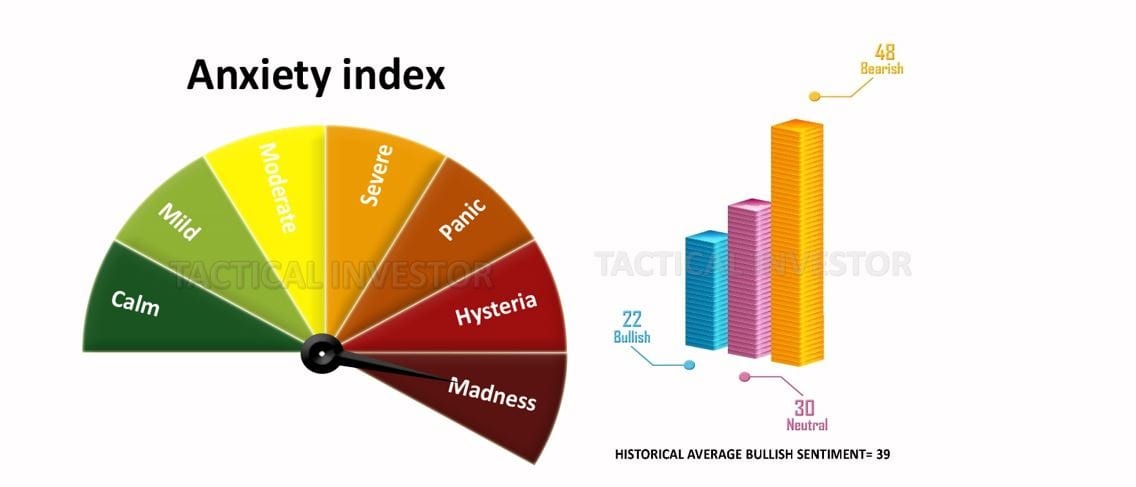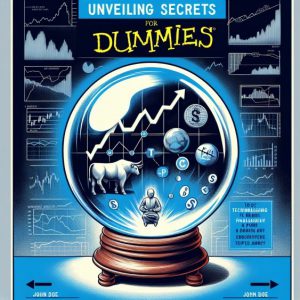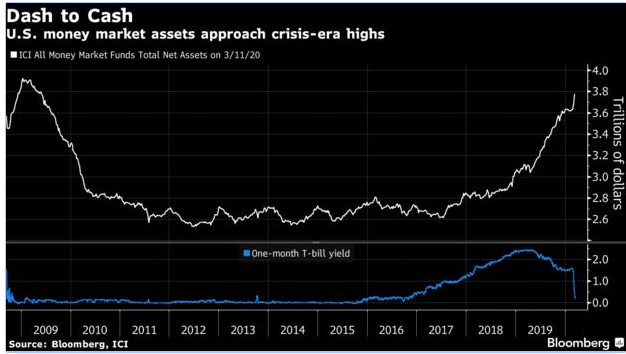
Stock Market Crash History: Learn or Repeat
April 22, 2024
The study of stock market crash history is not merely an academic exercise but a crucial endeavour for anyone looking to navigate the volatile waters of investing with confidence and expertise. Historical trends, psychological dynamics, and technical strategies converge to form a comprehensive understanding of market behaviours, providing invaluable lessons for novice and seasoned investors. This essay delves into the intricate dance of mass psychology, contrarian investing, and technical analysis, illustrating their collective power in mastering market movements and avoiding costly mistakes.
The Psychological Underpinnings of Market Movements
At the heart of the stock market are human emotions. Mass psychology, a key player in market dynamics, illustrates how collective emotional states can lead to dramatic economic consequences. An exemplary case is the ongoing Sriracha hot chilli sauce shortage, which has seen prices soar from around $3 to over $70 on secondary markets. This scarcity triggered a frenzy among consumers, pushing prices to irrational heights due to a surge in demand fueled by panic buying and the fear of missing out. This scenario mirrors the stock market environment where fear and greed are the drivers of irrational investment behaviors, leading to inflated asset prices and eventual crashes.
Contrarian Investing: Going Against the Grain
Contrarian investing is an approach that involves going against prevailing market sentiments. This strategy is based on the belief that the herd mentality of investors can lead to overvalued or undervalued market conditions. When most investors are bullish, contrarians will look for signs of overvaluation to sell or avoid stocks. Conversely, during market pessimism, contrarians will seek undervalued stocks to buy. This method was vividly illustrated during the COVID-19 market crash, where, despite widespread panic, tactical investors recognized the downturn as a buying opportunity, scooping up undervalued stocks that rebounded strongly once the initial fear subsided.
Technical Analysis: The Art of Timing
Technical analysis offers tools to identify potential entry and exit points in the market, which is crucial in maximizing investment returns. This analysis uses historical price data and statistical indicators to predict future market movements. For example, the bullish sentiment index, which had been below average for 19 months before normalizing in early 2023, provides insight into market mood shifts that signal buying or to sell opportunities. Technical analysts might view a consistent bullish sentiment above 60 as a warning to prepare for a potential market correction, advising investors to adjust their portfolios accordingly.
Synergizing Mass Psychology with Technical Analysis: Lessons from History
Integrating mass psychology and technical analysis is a powerful strategy for investors to optimize their market entry and exit points. By understanding the emotional drivers, such as fear and greed, investors can better anticipate market movements. This approach becomes even more effective when combined with technical indicators that highlight when these emotions are peaking, signalling potential turning points in the market.
Historical market crashes offer poignant lessons on the importance of this combined approach. For instance, during the tech bubble of the early 2000s, excessive optimism fueled by groundbreaking internet technologies led to inflated stock prices. Many investors ignored technical indicators that signalled overvaluation, resulting in significant financial losses when the bubble burst. Similarly, the 2008 financial crisis demonstrated how unchecked euphoria, poor risk management and disregard for warning signs from technical analysis could lead to catastrophic outcomes.
These examples underscore the critical need for investors to maintain a disciplined approach, blending an understanding of market psychology with rigorous technical analysis. This strategy not only helps in making informed decisions but also in safeguarding investments against the kind of speculative disasters seen in the past. By learning from these historical events, investors can avoid the pitfalls of emotional investing and better navigate the complexities of the financial markets.
The Perils of Misclassifying Desires as Needs in Investments
Investors often blur the lines between what they want and what they genuinely need, leading to perilous financial decisions. This is particularly evident in new and exciting sectors like artificial intelligence. The rapid increase in AI stock values can be reminiscent of historical speculative bubbles such as tulip mania. In these scenarios, the excitement and hype around new technologies can lead investors to classify speculative investments as essential, justifying aggressive financial commitments. This misclassification can inflate asset values beyond sustainable economic fundamentals, setting the stage for potential market corrections when reality reasserts itself.
Avoiding the ‘It’s Different This Time’ Mentality
This mentality often emerges during periods of perceived innovation and market highs, where the excitement about new technologies or economic conditions leads investors to believe that traditional market rules no longer apply. However, history consistently shows that fundamental market principles still hold. The belief that ‘this time it’s different’ can dangerously ignore these enduring patterns, leading to oversight of risk factors and potential financial losses. Recognizing that markets often repeat or rhyme can help investors maintain a more realistic perspective and avoid the pitfalls of overconfidence in changing times.
Integrating Insights for Better Investment Decisions
Both of these investment pitfalls stem from a common root: the emotional and psychological influences on financial decision-making. Behavioral finance studies, such as those focusing on market psychology, highlight how emotions like fear and greed can drive irrational investment behaviors, often exacerbated by the misclassification of wants as needs and the dismissal of historical market behavior during innovative times.
To safeguard investments, it is crucial to critically assess whether an investment is driven by a genuine need or merely a desire amplified by market euphoria. Additionally, investors should consistently remind themselves of market history and fundamental principles, using them as a compass during market volatility and innovation hype. This dual approach helps create a balanced and informed investment strategy that can withstand the temptations of speculative bubbles and the allure of unprecedented market conditions.
By understanding and integrating these insights, investors can better navigate the complex landscape of modern financial markets, making decisions that are not only informed by historical wisdom but also aligned with genuine financial needs and goals.
Let’s examine some historical events to understand how Tactical Investor reacted. Those who fail to learn from history are destined to repeat it.
What Happens When the Stock Market Crashes Update Aug 2020
The masses panic and dump everything, Tactical Investors jump in and buy, and the sorrowful story of misery and suffering continues. The masses never learn they talk big, but when the time to act comes, they chicken out and flee for the hills. Look at how we reacted during that time frame.
Shortly after this stampede, the markets bottomed. Mass psychology in real-time. We hope your chaps kept a trading journal as suggested, for this crash will be remembered as one of the biggest B.S crashes of all times. Or if we put in terms of Aesop’s fables. This is a turbocharged version of the boy that cried wolf one too many times. Market Update May 2, 2020
The Crowd begs for a Market Opportunity, and when it comes……
They panic, stating that it would make more sense to wait for a better price. When the better price arrives, they say well, things don’t look so good, right now because so and so is saying this and the other brain surgeon is saying that. Let’s just wait for the dust to settle, and the only thing that settles in the dust is the poor chap who kept waiting for a better opportunity. Opportunity knocks rarely, and it does not take kindly to being ignored.
This is the one reason the masses are destined to repeat history forever and ever Amen. Nothing will ever change; the equation must balance. For the few to win, many must lose; you are welcome to try to alter that equation. No one can change you; only you can change the way you think or act. Counsel with the wisest of men and women is not going to help shape a silly man or woman who has decided that he/she knows what’s best without even studying oneself and the mass mindset. Market Update May 14, 2020
The COVID-19 market crash wasn’t a catastrophe but a rare chance for investors.
Market trends are never a straightforward climb; they meander, creating opportunities. While panic spread among the masses, Tactical Investors seized the moment, backing the truck and loading up on top-quality shares. As the markets release some pressure, the usual overreactions from the masses ensue.
To change the outcome, you must break away from the herd mentality. If you follow the crowd, every day feels like Groundhog Day, with no real change. Shifting your perspective is the key; start seeing market crashes as buying opportunities.
We’ve shared numerous articles emphasizing that crashes should be embraced, not feared. If you’re intrigued, visit our website and search for “crash” or “stock market crash” to discover a wealth of insights on this perspective shift. It’s time to redefine how we perceive market downturns and transform them into avenues for growth.

The masses are still in disarray; regardless of the intensity, every pullback should be embraced like a lost love. Buy the fear and sell the joy; that’s the perfect recipe for long-term financial success in the market.
The Interplay of Chess Strategy and Market Dynamics
In both chess and investing, it is crucial to discern between essential moves and unnecessary ones. This mirrors the distinction between market wants and needs, where confusing desires with necessities can lead to impulsive decisions.
The recent enthusiasm for Artificial Intelligence (AI) illustrates this point. Many investors, buoyed by the belief in AI’s transformative potential, rush to invest without considering the risks, akin to the tulip mania where false beliefs in perpetual demand drove inflated prices.
Such misclassification of desires as needs can result in reckless financial behaviour, akin to making unnecessary moves in chess to achieve quick wins instead of strategically planning for long-term success.
Patience and strategic thinking are paramount in both realms. Just as a chess master carefully plans each move, investors should discern between wants and needs and resist the urge to follow the crowd.
Similarly, the “it’s different this time” mentality often precedes market crashes, amplifying euphoria during upswings and panic during downturns. While each market cycle is unique, historical patterns can provide valuable insights.
For instance, despite the hype around AI, historical market trends suggest caution. Cyclical stocks and critical commodities, historically resilient during market downturns, may offer stability, experiencing ‘higher lows’ compared to other sectors.
Conclusion
Unlocking the mysteries of stock market crash history is more than an academic pursuit; it is a practical framework for making informed and strategic investment decisions. By integrating the insights of mass psychology, the contrarian viewpoint, and technical analysis, investors can safeguard their assets and capitalize on market downturns, turning potential threats into lucrative opportunities. As history has shown, those who fail to learn from the past are doomed to repeat it. Hence, in the financial arena, a well-rounded understanding of historical trends, combined with a keen sense of market sentiment and technical acumen, is indispensable for those who aspire not just to participate in the market but to master it.
Other Interesting reads

Unlocking Value in Equal-Weighted Index Funds: Benefits and Strategies

Active vs Passive Investors – The Power of Discipline

Investing allows you to beat inflation and maintain the purchasing power of your money over time

OVV Stock Forecast: Buy, Hold, or Sell?

What Does a Death Cross Mean in the Stock Market? Exploring Its Significance

Financial Freedom Book: A Pinch of Salt, a Splash of Whiskey

Unveiling Secrets: Technical Analysis for Dummies

The Primary Purpose of Portfolio Diversification is to Finesse Your Investments for Optimal Returns

The Enduring Reign: Why is the US Dollar the World’s Most Pre-eminent Currency?

Dogs of the Dow ETF: BiggerBite, Less Work

How Do You Win the Stock Market Game? Effective Strategies

Technical Analysis of Trends: Cracking the code

A Sophisticated Approach: Do Bonds Increase Returns When the Stock Market Crashes?

Mastering Your Finances: Why You Need to Learn How to Manage Your Money with Grace




